Seven Questions Over Breakfast with Paul Rogers
 November 3rd, 2008 by jules
November 3rd, 2008 by jules
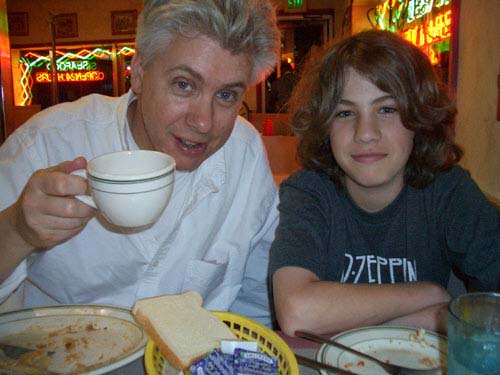
“At last: a jazz book that thrillingly, exhilaratingly, palpitatingly gets it.” That’s what Kirkus Reviews wrote of Jazz ABZ: A Collection of Jazz Portraits from A to Z (Candlewick, 2005) by Wynton Marsalis and illustrated by today’s guest for seven questions over breakfast, Paul Rogers.
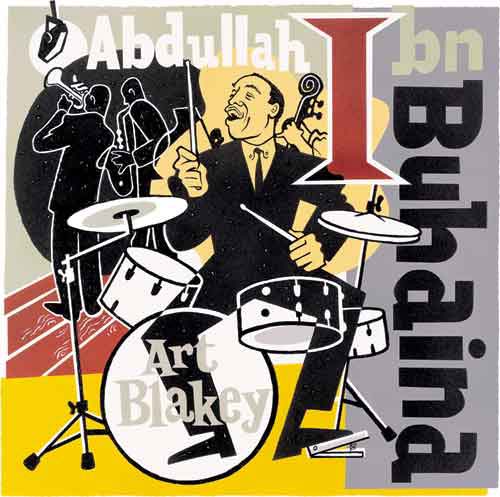
Remember this flat-out beautiful book from a few years ago, what Publishers Weekly called “a must for anyone who has ever been drawn to a scat by Ella or a riff from Miles or who has whirled around the dance floor courtesy of Count Basie”? Marsalis used a dizzying array of poetic forms—from a rondeau to a pantoum to a sonnet to MUCH more—to pay a bold, illuminating tribute to twenty-six outstanding jazz performers, his collaboration with Paul its own improvisational wonder. Paul is pictured in the opening photo from a few years ago with his son, Nate, “having a late night breakfast in Baltimore at Sip n’ Bite.” And Paul’s 7-Imp breakfast-of-choice this morning? “Scrambled eggs, bacon, and a side of wheat toast sounds like a good idea, but I always regret it afterwards. I usually start the day with black coffee and a Lipitor.”
Paul has a brand-new illustrated title out, just released last month from Simon and Schuster/Atheneum: Forever Young is a picture book adaptation of Bob Dylan’s 1973 song by the same name, which ultimately landed on his 14th studio album, Planet Waves. And because I think Paul’s work is exciting—not to mention a big corner of my heart is devoted to picture books about music, particularly jazz—I thought I’d invite him over to talk a bit about the new title and his work as an illustrator.

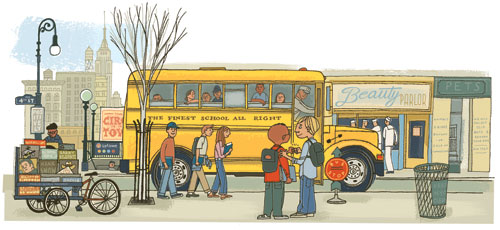
Paul, as you will read below, teaches illustration. Forever Young is his second illustrated title, but he’s been hard at work since 1980 as an award-winning illustrator and designer, creating poster art, editorial illustrations, murals, sports illustrations and poster art, and logos, stating in 2006 at this blog that he actually considers himself more of a graphic designer than an illustrator. Here are but a few examples of some of that work:
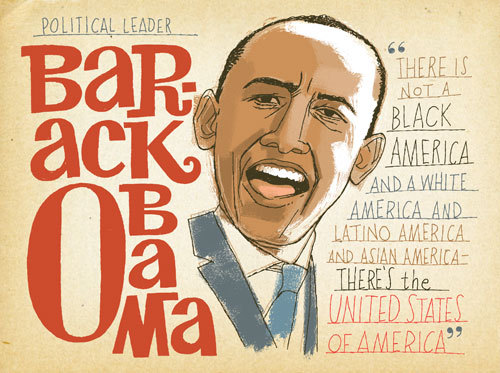

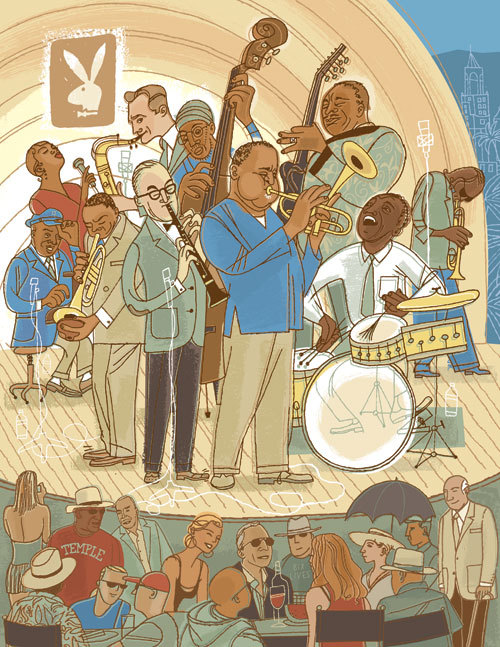
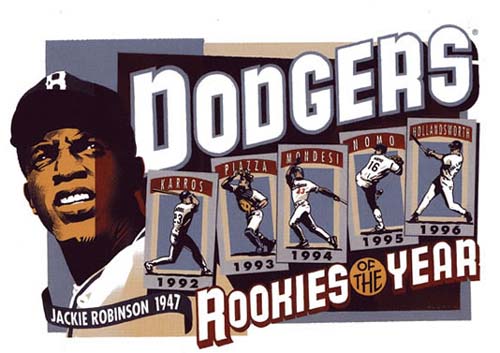
In the new title, Dylan’s lyrics are given a new interpretation through Paul’s eyes. He uses them to show us the growth of a musician and activist who is most assuredly not Dylan, yet the book is a treasure trove of Dylan references; the book is rife with what Publishers Weekly calls visual shout-outs to Dylan’s career, adding “{b}aby boomers will have a blast decoding it all.” In fact, he closes the book with “Illustrator’s Notes,” which include thumbnails of each spread and the visual references therein. Occasionally, he throws in some modest music recommendations in these notes and gives nods to the reader (“That’s a Siamese cat from ‘Like a Rolling Stone,’ keeping an eye on things, but you probably already noticed that.”) His cartoon style in the book is a far cry from the album-cover art of Jazz ABZ, but what remains consistent is the superb design, composition, and energy. And the element of nostalgia for both of Paul’s titles captivates, robustly and reverently paying tribute to the musicians within, yet managing to never be too cloying.
Here’s my very favorite illustration for the book — but which is not from the book. Writes Paul at his www.drawger.com site, “Woody Guthrie’s influence on Dylan was immeasurable, the first song Bob wrote was ‘Song to Woody’ and he name-checks Cisco, Sonny and Leadbelly too. This illustration was an early style exploration that didn’t make it into the book.”
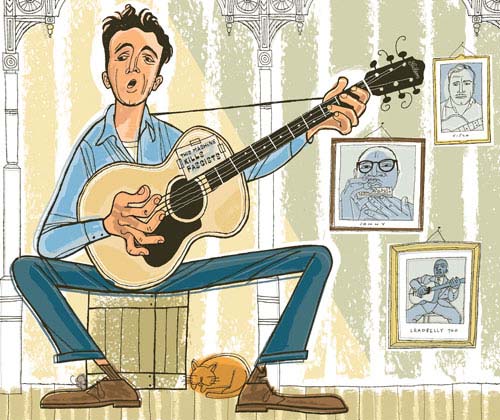
Let’s get the basics from Paul while we set the table here for our seven questions over breakfast, and I thank him again for stopping by.
7-Imp: Are you an illustrator or author/illustrator?
Paul: Illustrator.
7-Imp: Can you list your books-to-date?
Paul: Jazz ABZ : An A to Z Collection of Jazz Portraits, Wynton Marsalis, with Phil Schaap; Candlewick Press, 2005. Forever Young, Bob Dylan; Simon and Schuster/Atheneum 2008.
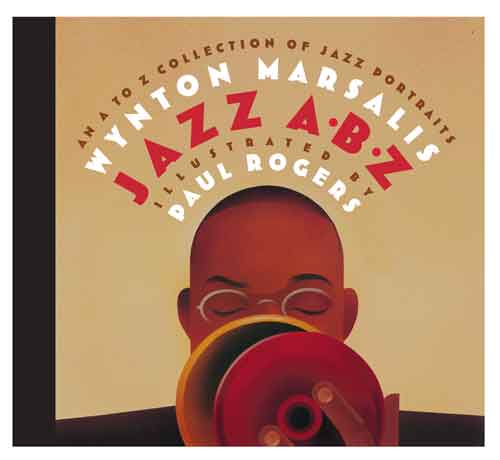

7-Imp: What is your usual medium, or -– if you use a variety -– your preferred one?
Paul: For Jazz ABZ, the illustrations were painted with acrylics and ink. Everything was done by hand using traditional tools, airbrush, pen etc. The drawings for Forever Young were drawn with pen on paper, and then scanned and the color was applied using a computer and Adobe Illustrator.
7-Imp: If you have illustrated for various age ranges (such as, both picture books and early reader books OR, say, picture books and chapter books), can you briefly discuss the differences, if any, in illustrating for one age group to another?
Paul: Jazz ABZ is a picture book for all ages. Although we used the format of an ABC book, the illustrations weren’t done like a traditional children’s book. I sort of thought of them as album covers for records that never were released.

Simon and Schuster/Atheneum wanted Forever Young to be a real picture book aimed at ages 4-12 and their parents. It was a challenge to adapt the lyrics to one of Bob Dylan’s most loved songs for a children’s book. At first, I thought about doing a series of drawings that followed the ideas of the lyrics, rather than a narrative. Ginee Seo and Ann Bobco at Atheneum had the idea for a story about a boy who is given a guitar by a folksinger, grows up using music as a way to make connections with people, and learns about the world around him. At the end of the story, he passes the guitar on to a little girl. That gave the book a nice structure — a beginning, middle and end. I had the idea of setting the story in New York City in the early sixties and that gave me the chance to fill the pictures with references to Dylan’s life and lyrics, and to people who had an impact on his life. The goal was to make a book that parents could read to their children, and would not disappoint Dylan’s fans. There was no way this was going to be a book about little Bobby Dylan growing up, or something corny – and I wanted to do something that I imagined Dylan would like.
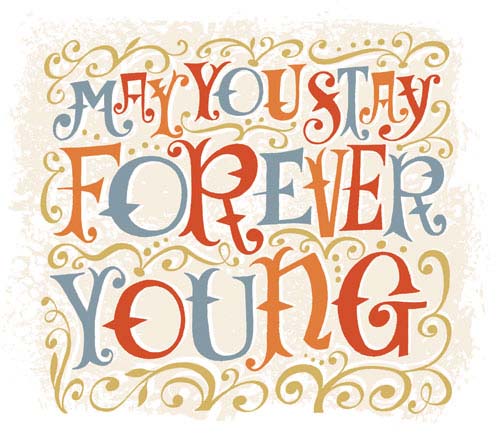
7-Imp: Where are your stompin’ grounds?
Paul: Pasadena, CA. I’ve lived in Los Angeles my whole life.
7-Imp: Can you briefly tell us about your road to publication?
Paul: After graduating from Art Center College of Design in 1980, I’ve worked as a freelance illustrator, producing work for advertising and editorial clients. Jazz ABZ had a very long road to publication. I got the idea for the book around 1994 and worked on the illustrations between my other assignments. Wynton and I met on another project and struck up a friendship, and I asked him if he would write something for the book when I finished the illustrations. He said yes, and over the years we’d talk about the book, as I was slowly making my way through the alphabet, never really sure if the project would ever see the light of day. In 2002, I was about halfway through and we started showing the illustrations to publishers. Karen Lotz and Chris Paul at Candlewick Press loved the idea and we signed contracts for a 2005 release — and then the pace really picked up. I finished the remainder of the illustrations within months, Wynton wrote the poems, and my wife, graphic designer Jill von Hartmann, handled the book design and made everything look beautiful.
Forever Young had a very fast timeframe. Ginee Seo called to see if I’d be interested in working on a project with Bob Dylan. They sent a few illustrated books to Dylan for him to pick an illustrator and he liked Jazz ABZ, so I was in. We sent everything over to Dylan’s office for approval (there was no real reason to chat directly with him). Everyone liked what we were doing and the whole book went very smoothly.
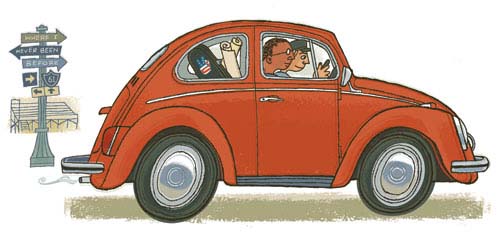
7-Imp: Can you please point us to your web site and/or blog?
Paul: paulrogersstudio.com; drawger.com/paulrogers (a fantastic site of about 80 illustrator’s blogs); http://illoz.com/paulrogers/.
7-Imp: If you do school visits, tell us what they’re like.
Paul: I mostly visit art schools and talk to illustration students. Forever Young is just out, it’s my first real picture book and I haven’t done any visits to elementary schools. My mom reads books to a first-grade class every week, and she has started working it into her rotation of books. Something about that cracks me up.
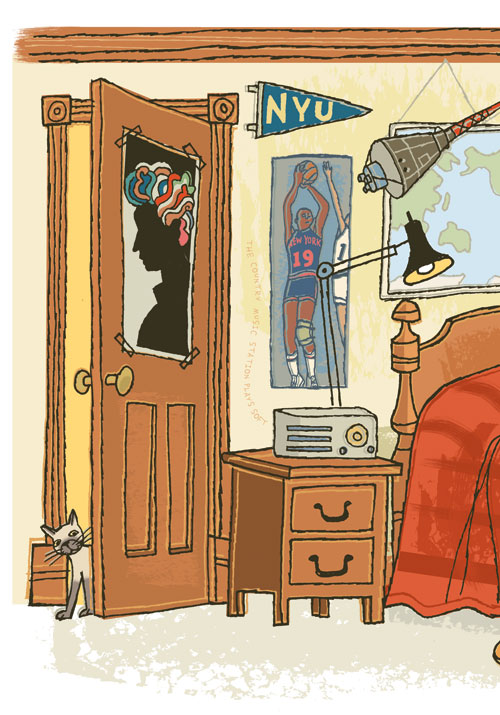
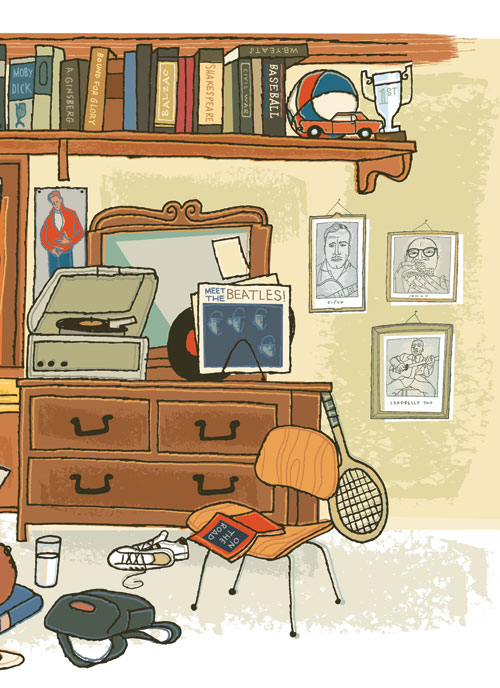
“May you always know the truth / And see the lights surrounding you”
7-Imp: If you teach illustration, by chance, tell us how that influences your work as an illustrator.
Paul: I teach at Art Center in Pasadena. The students are remarkably smart and talented and are working hard towards illustration careers. They’ve probably had more influence on me than I’ve had on them. As an illustrator/instructor, you have to produce work in the studio that backs up the things you’re saying in the classroom. You can’t be phony. Students respect good work and can also be very hard on work that doesn’t measure up.
7-Imp: Any new titles/projects you might be working on now that you can tell us about?
Paul: Wynton Marsalis and I are working on another book for Candlewick Press. He’s written twelve short poems about sounds that a young child can recognize and the types of musical instruments that make those sounds. It will be a picture book for young readers. I also have a couple of other ideas that are percolating.
 Okay, the table’s set. We’re good-to-go with our strong coffee, though I think I’ll pass on the Lipitor. In fact, I might serve up some of those scrambled eggs and wheat toast and talk him into having some with me. In any case, we’re ready to talk more specifics . . .
Okay, the table’s set. We’re good-to-go with our strong coffee, though I think I’ll pass on the Lipitor. In fact, I might serve up some of those scrambled eggs and wheat toast and talk him into having some with me. In any case, we’re ready to talk more specifics . . .
1. 7-Imp: What exactly is your process when you are illustrating a book? You can start wherever you’d like when answering: getting initial ideas, starting to illustrate, or even what it’s like under deadline, etc. Do you outline a great deal of the book before you illustrate or just let your muse lead you on and see where you end up?
Paul: I’ve done two books and they both took form in different ways. The idea for Jazz ABZ came to me while I was at the ballet. Swan Lake was beautiful, but I was struggling to stay awake and began running a list of jazz musicians in my head to see if I could think of one for every letter of the alphabet. The next day, I wrote down the list, and the book began taking form. My idea was to make some portraits of jazz musicians that included the letters of their names, and used a visual style for each one that communicated something about their music and personality. When the illustrations were done, I sent copies of them to Wynton and he wrote poems for each one. He did the same thing with words that I did with the pictures; he chose poetic forms that matched the artist’s music and personality, and then wrote alliterative poetry that communicates to the reader his ideas about these great names in jazz. My wife, Jill von Hartmann, is a brilliant graphic designer, and she is the one with all the good ideas. The binding is designed to look like an old 78 rpm album, and we’re both very particular about how the typography works with the illustrations. To me, it’s all one big thing, images and words on a page, and as I work on a book I always see the whole thing as a unit.
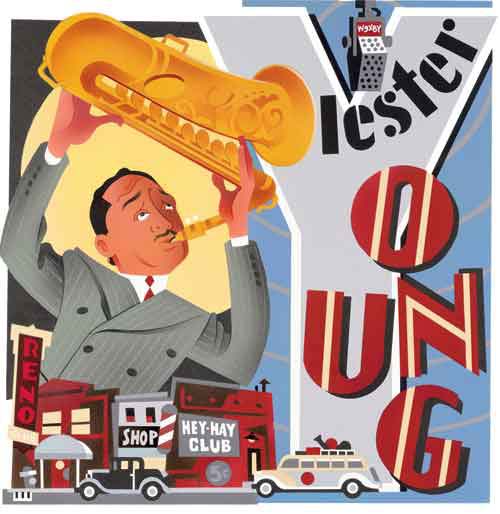
Forever Young took a more traditional approach to a picture book. Once we had the story, and had worked out the pacing to parallel the lyrics, I did small sketches to figure out what would be shown on each page. Each spread has the sense of a stage-set with a lot of space for the characters and the details about Dylan that I wanted to include. I listened to nearly every Dylan record, read a lot of interviews, and re-read Dylan’s memoir Chronicles, Volume One. I kept a list of things to include and, as the illustrations took form, I found places to put these details. The scratchy line and spongey brush textures where borrowed from one of my favorite American artists, Ben Shahn. I also looked at some animated films from the late fifties and early sixties for ideas about making complex scenes look fresh.
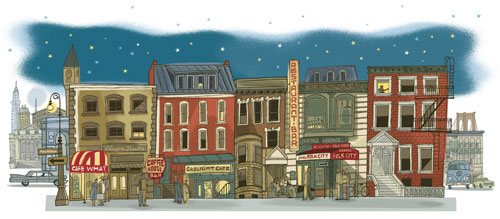
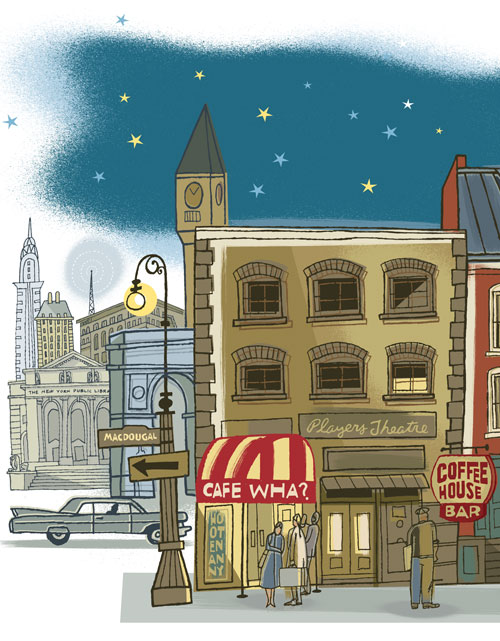
2. 7-Imp: Describe your studio or usual work space for us.
Paul: My studio is in Old Pasadena in a building from 1929. I’ve collected a lot of books over the years and I’ve also got a lot of records here from the pre-iTunes days. I’m in the studio just about every day but Sunday, unless I’m on a big deadline, so it’s nice to have a good space to work in and to have my stuff around me. Jill’s studio is across the hall, and unless my music is too loud, the doors are open.

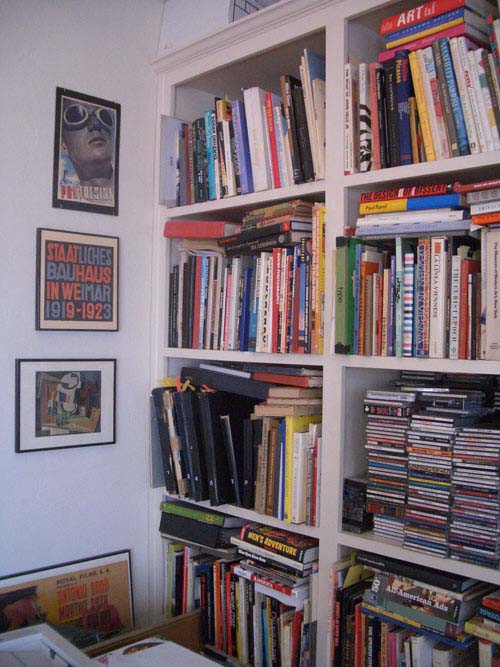

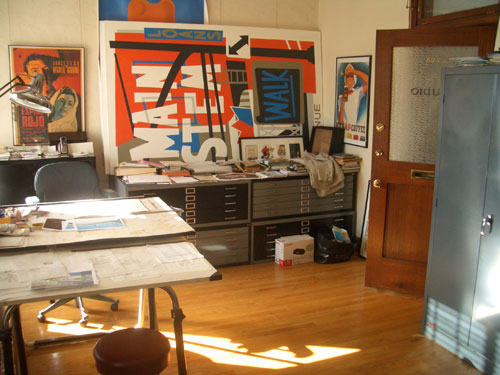

3. 7-Imp: As book lovers, it interests us: What books or authors and/or illustrators influenced you as an early reader?
Paul: As a kid, I read comics, and my mom would take my brother and me to the library every two weeks to check out a stack of books. It never occurred to me that I could illustrate books until later. When I started looking at children’s books and thinking about them seriously, I looked at Paul Rand, M. Sasek, Aurelius Battaglia, and Bruno Munari.
4. 7-Imp: If you could have three (living) illustrators or author/illustrators—whom you have not yet met—over for coffee or a glass of rich, red wine, whom would you choose?
Paul: That’s a tough one. I’ve met a number of book illustrators I admire whom I’d like to have coffee with, including Maira Kalman, Gary Kelley, Kadir Nelson, Seymour Chwast, Jim McMullan, and Chris Raschka. But to pick three, it would be my with my friends, Marla Frazee, Noah Woods, and Calef Brown.
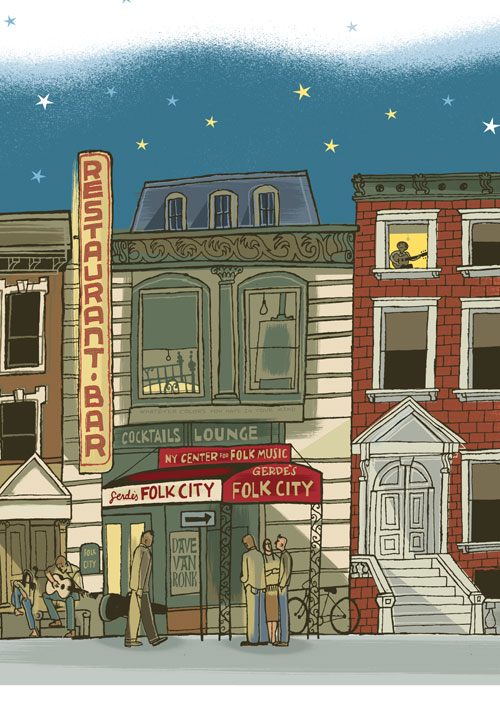
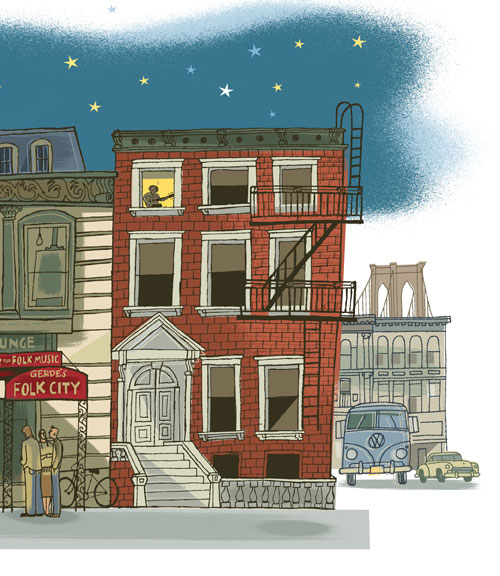
5. 7-Imp: What is currently in rotation on your iPod or loaded in your CD player? Do you listen to music while you create books?
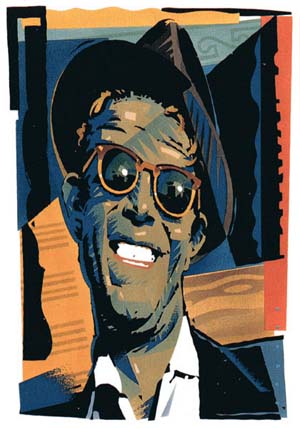 Paul: I always work with music on and the selection varies, according to what I’m doing. I listened to a lot of Dylan while I was working on Forever Young. I wasn’t one of those obsessive fans who know arcane details about Dylan, but the more I listened, the deeper the well seemed to be. Like Duke Ellington, Dylan has had a long career and he made so much good music in every era. I have more jazz music on my iPod than any thing else, but there’s a good variety, too. Here’s a list from iTunes Party Shuffle that’s playing right now: Herb Albert, Duke Ellington, Willie Nelson, Ray Charles, Art Tatum, Ernie K-Doe, Fats Navarro, Henry Mancini, Jelly Roll Morton, Dusty Springfield, Bob Dylan, Fats Waller, Dave Brubeck, and Norah Jones. {Pictured here is Paul’s illustration of Tom Waits for LAX Magazine.}
Paul: I always work with music on and the selection varies, according to what I’m doing. I listened to a lot of Dylan while I was working on Forever Young. I wasn’t one of those obsessive fans who know arcane details about Dylan, but the more I listened, the deeper the well seemed to be. Like Duke Ellington, Dylan has had a long career and he made so much good music in every era. I have more jazz music on my iPod than any thing else, but there’s a good variety, too. Here’s a list from iTunes Party Shuffle that’s playing right now: Herb Albert, Duke Ellington, Willie Nelson, Ray Charles, Art Tatum, Ernie K-Doe, Fats Navarro, Henry Mancini, Jelly Roll Morton, Dusty Springfield, Bob Dylan, Fats Waller, Dave Brubeck, and Norah Jones. {Pictured here is Paul’s illustration of Tom Waits for LAX Magazine.}
6. 7-Imp: What’s one thing that most people don’t know about you?
Paul: I’m the Lance Armstrong of illustrators. Fifteen years ago, I was diagnosed with colon cancer. I had great doctors at UCLA, and after radiation, surgery, and a year of chemo, I beat cancer. I couldn’t have done it without Jill, who moved out to L.A. to help me when I really needed it. I was one of the lucky ones, my kids were young, and I felt it wasn’t my time to go yet.
7. 7-Imp: Is there something you wish interviewers would ask you — but never do? Feel free to ask and respond here.
Paul: “How are your kids?”
They’re great, thanks for asking. My daughter, Alex, is a senior at George Washington University in D.C., and she has been working in Obama’s campaign office since the primaries. My son, Nate, is a freshman at UC Santa Cruz, a school he seems to be fitting into very well. His first two papers were on Stephen Colbert and Leadbelly. I miss seeing them, but I couldn’t be more proud.

but, ultimately, not used in the book
7-Imp: What is your favorite word?
Paul: “Yes, and”
7-Imp: What is your least favorite word?
Paul: “No, but”
7-Imp: What turns you on creatively, spiritually or emotionally?
Paul: Someone facing adversity with elegance.
7-Imp: What turns you off?
Paul: Whining.
7-Imp: What is your favorite curse word? (optional)
Paul: Well, you probably don’t want it written out on your blog, but half of the word is “mother.” When you use it, people know you’re serious.
7-Imp: What sound or noise do you love?
Paul: The four beat count-off from the bandstand at the beginning of the late set at the Village Vanguard.
7-Imp: What sound or noise do you hate?
Paul: Christmas music in November.
7-Imp: What profession other than your own would you like to attempt?
Paul: Like everyone in L.A., I’d like to direct.
7-Imp: What profession would you not like to do?
Paul: I wouldn’t last ten minutes as a doctor.
7-Imp: If Heaven exists, what would you like to hear God say when you arrive at the Pearly Gates?
Paul: “All your friends are here, and we’ve got your studio set up for you.”
All photos (with the exception of the coffee mug) courtesy of Paul Rogers.
JAZZ ABZ illustrations © 2005 by Paul Rogers. Published by Candlewick. Posted with permission of illustrator. All rights reserved.
Illustrations from FOREVER YOUNG © 2008 by Paul Rogers. Published by Simon & Schuster/Atheneum. Posted with permission of illustrator. All rights reserved.
All other art work taken from Paul’s blog or site with permission. All rights reserved and all that good stuff.
As a Nashvillian, I must close with this gem:

Right.
That’s my Christmas present to myself taken care of!
I *MUST* now run off and listen to Forever Young and sigh a great deal that the book isn’t in my hands to pore over RIGHT NOW.
Everything about some people’s lives and their art is just gorgeous, and this was a real treat to read!
Fabulous! Thanks for posting this today–it made my morning.
(Now, off to vote…)
Thank you for this. The whole post from his witty remarks to his pride in his children to the fabulous details of the “ladder to the stars” spread made me happy this morning. And I love that his cat is named Thurber!
What a treat!! I had not seen the Jazz ABZ book before, and the illos you’ve posted are amazing. I treasure my copy of Forever Young for obvious reasons. It really is fun to pore over the illos and figure out the references. And my pulse quickened at the RCA Victor chair and the mention of Maira Kalman, Marla Frazee and Calef Brown.
Thank you for this Dylan fix. It’s a good day :)!
Oh, this is JUST the taste of grounded and gorgeous inspiration I needed today. Thanks you guys…
Love that the cat is James Thurber. Also? ADORE his artwork, as you probably recall from my review of Jazz ABZ (mentioned twice on my blog – once alone, and once for Under the Radar).
Brilliant, beautiful stuff.
Hands-down my favorite “Seven Questions Over Breakfast” interview. (Er, so far!) Everything about it. But especially the artwork, of course. Ben Shahn, absolutely. And in the Playboy 30th anniversary thing there’s more than a little Al Hirschfeld.
And, oh man, the Forever Young book just makes me want to weep. Reading into an author’s unstated intentions is always risky business, but I love love LOVE the way the “build a ladder to the stars” spread echoes Norman Rockwell’s painting of Main Street in Stockbridge at Christmas. The irony is delicious, because NR’s Stockbridge is viewed as a beautiful (however idealized) icon of American life — and Dylan seems to (but doesn’t really) fly in the face of that.
Congrats and thanks to 7-Imp, Jules, for scoring such a perfect subject for today, of all days.
You inspire me. Thank you!!
Loved the Dylan info and story behind the book!! It is a great song for everyone. When my son turned 18, I took him to a Dylan concert. It was in Rochester, MN, on a perfect September evening at a ball diamond. It will always be a great memory we share.
The illustrations remind me of my small-town Minnesota roots–same as Dylan’s. Small stores, main streets, vertical store signs, globe street lights and, if you’re talking Dylan, trains!
I frequently ask today’s youth “where’s your Dylan?” because there is no voice to protest the injustices in the U.S. today. We really need to be stirred up/woke up/set on fire to react to the problems around us.
Thanks for the good read!
A still-long-haired Mom
[…] Whomp! Whomp! Boy howdy and howdy boy, do I love to see the illustrations of Paul Rogers, who visited for breakfast way back in ‘08 and collaborated with Marsalis back in 2005. This one is described on the […]
Sorry, but the illustration of Tom Waits is by Mick Haggerty !!!!!! Or no?????